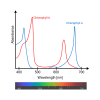Hello everyone, its been almost 2 years since I started this thread, lots of great info in here and some big names in the community. I appreciate all the comments from everyone and all the data.
I have come back to this thread to run a test. It will take quite a while, but here is the test that will be run.
1,000W DE HPS
5 x 5 Space
9 Plants 3 Gal Coir 3 Different strains staggered in each row for optimal results
Control Run
2100k DE HPS Veg and Fllower
4000k Run Veg + Flower
6000k Run veg + Flower
10,000k Run Veg + Flower
After those runs data will be analysed as well as all samples sent to a lab for quantitative testing.
After this, we will know which Kelvin spectrum is best for what and things can be tweaked based on teh results as well as lighting tech others plan to use.
Then we can run this
Mix Run
Veg: Whichever Spectrum Performs best
Flower Whichever Spectrum Performs Best
Finisher 10k or whichever spectrum performs best
We will then know which Kelvin is most ideal, regardless if its 1 Kelvin or its multiple in different stages.
We will find out and I will post all the information I have in both photos and videos.
This is for my own curiosity and seems has sparked quite a stir.
Please lookout for a new thread starting in the coming weeks.
Regards, Trippy









